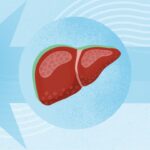Meniscal tears are a fairly common knee injury, one that some athletes choose to play through, notes the American Academy of Orthopaedic Surgeons (AAOS).
While cycling strengthens the leg muscles surrounding the knee, your ability to continue cycling depends on the type of tear you sustain. A rip in certain areas of the meniscus may heal on its own without surgery, but serious tears require more attention and recovery time. Your doctor can recommend a rehabilitation program that may include biking with a torn meniscus.
Causes of a Meniscus Tear
Your knees are equipped with two C-shaped pads of cartilage that cushion the juncture of your shin and thigh bones, according to Mayo Clinic. The pads sit on the outside, or lateral, and inside, or medial, portions of the joint.
Meniscal tears often occur with a forceful twist or rotation of your knee, particularly when your foot is planted on the ground. Squatting, lifting something heavy, and even kneeling can cause an injury to a meniscus. Your menisci also wear out with age and use, so tears can occur in older adults while performing normal activities if the cartilage is worn down enough.
Cycling and the Menisci
Cycling is a low-impact sport, meaning there is little weight-bearing movement placed on your joints. Higher gears, hills, and fast sprints do place stress on the knee joint, however. Improper seat height, shifting incorrectly, and riding too hard can all negatively impact your knee, notes the Orthopedic Specialty Institute in Fort Lauderdale, Florida.
Pain along the inside part of the knee may indicate a medial meniscus tear, while a lateral meniscus tear will cause pain on the outside of your knee, according to Cedars Sinai. Other symptoms may include swelling, loss of full range of motion, and locking of the knee. If cycling causes any pain in your knee, stop the activity immediately. If pain persists, contact your doctor.
Types of Meniscus Tears
There are several tear classifications, the severity of which depends on its location. Tears along the outside areas of the meniscus may not require surgery, as this area has a blood supply to deliver nutrients, according to the AAOS. These can often be healed with rest, ice, compression, and elevation.
Radial tears run straight across the width of the meniscus and are among the most severe types of tears. Flap and bucket handle tears impact the inner portion of the cartilage pad and may require surgical repair and longer healing time. In addition to tearing cartilage, a knee injury can result in damage to the ligaments that hold your bones in place.
Your doctor can determine the type and severity of a meniscus tear with a physical exam and imaging tests including an MRI and X-rays.
Cycling in Rehabilitation
Riding a stationary bike is often recommended during rehabilitation following surgery to repair a torn meniscus, according to the AAOS. Stationary bikes can be easily programmed to provide little resistance to your knee joint. They can also help you regain normal range of motion in your knee.
Your ability to use or ride a bike is dependent on the extent of your injury, surgery, and overall health. A doctor or physical therapist will clear you for cycling when swelling and pain are reduced and your knee regains a certain amount of mobility.
Read the full article here




